|
|||||||||||
|
FEATURESAll the Tea in ChinaCharlene Wang 汪晓宁
This is an account of pursing, tasting, finding and trading in tea by a 'tea entrepreneur', Charlene Wang, the founder of Tranquil Tuesdays, a company based in Beijing. We would note that Charlene set out on her own 'ancient tea road' after a chance encounter with Dragon Well tea 龍井茶, which is produced near West Lake at Hangzhou. For more on Dragon Well, see Keith Forster's article in this issue, as well as the December 2011 issue of this journal.—The Editor Anxi: a Tieguanyin marketIn Anxi, Fujian province 福建省安溪县, where Tieguanyin oolong 铁观音乌龙茶 tea is produced, rural commercial strips that are normally sleepy and half-deserted become frenetic trading towns during harvest time. In October 2011, during the autumn harvest, when I was staying with a family of fourth-generation Tieguanyin producers, I witnessed this transformation first hand. Traffic is jammed bumper to bumper as buyers from all over China set up roadside operations for tasting the local tea. The street is lined on both sides with these stands, stocked with boiling water, covered tea brewing vessels (gaiwan 盖碗) to make the tea and so that purveyors can taste the batch. Close to hand are scales used to weigh the tea. 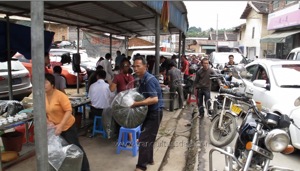
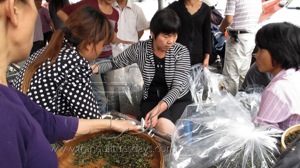 Figs 1&2 Images of the autumn tea harvest in Anxi (All images courtesy of Tranquil Tuesdays www.tranquiltuesdays.com)
Tea producers whiz by on motorbikes carrying huge bags of that day's finished batch of tea, while others walk up and down the street, carrying their own bags and stopping at the stalls of various buyers who might be interested in their particular batch. At some stalls sellers are gathered around up four people deep, waiting for the buyer to evaluate their product. Sometimes crowds of up to fifty people crowd lurk around to see what the buyer thinks. Amidst all this frenzy, there are trucks packed full of tea trying to get through the crowded two-lane roadway. They will transport their loads to larger markets elsewhere within the province, such as Xiamen 厦门 or Fuzhou 福州, or to the Xiamen seaport, from which Tieguanyin oolong is destined to reach tea drinking enthusiasts around the world. 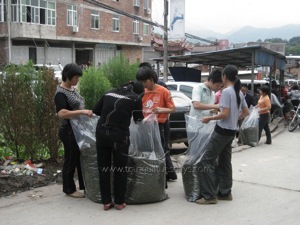
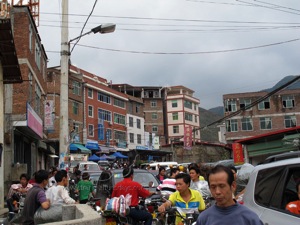 Figs 3&4 Images of the autumn tea harvest in Anxi
I have long been obsessed with tea, seeking it out everywhere I go and amassing a cumbersome collection from around the world. I have taken a rickshaw through the colorful, congested alleys of New Delhi's old city in search of a historical tea shop; I have wandered around snowy backstreets of St. Petersburg hunting for a tea I tasted on the Trans-Siberian Railroad; I have enjoyed a classic British tea service at The Strand, an old colonial outpost in Rangoon and at The Empress in Victoria, Canada. I have navigated between loud, crazy streets and hushed, overly air-conditioned interiors in the megalopolis of Bangkok seeking out a new Thai tea brand that I had read about; I have spent rainy days strolling around Uji 宇治, Japan's legendary historical tea producing region; and I have had numerous adventures roaming the tea hill country of Sri Lanka in a three-wheel tuk tuk. Beijing: a sip of LongjingAnd yet, no teas have made as deep an impact on me as those of China. The first time I had a sip of a tea that caused me to pause was at a routine diplomatic meeting at the Ministry of Foreign Affairs in Beijing. The ministry served a green tea, a Longjing 龙井 (also known as Dragon Well tea), from near West Lake that was so revelatory, so nutty and creamy, with an elegant softness that stood out so sharply from all the tea drinking I had ever done before it, that it became distracting. All I could think was, 'What is this tea? Why is it so good? Where can I find more of it? If tea can taste like this, why am I drinking what I have been?' I have long forgotten what was discussed during that meeting, but I have not forgotten that 'tea revelation' and I have been seeking distractingly good Chinese teas ever since. Eventually, I was so inspired by what I discovered that I founded a Chinese tea and teaware company. I now work to bring Chinese teas and crafted teaware to new audiences outside of China. I source all of the teas myself, traveling to tea producing regions around the country building personal relationships with farmers and producers in different regions, each of which is known for distinctive types of teas. I also work with three young artisans in Jingdezhen 景德镇, the center of porcelain craftsmanship and imperial porcelain production since the Song dynasty, to handcraft our teaware collection. Throughout my travels I have witnessed firsthand the Chinese tea traditions around the country. It is hard to overstate how fundamental tea remains to the Chinese way of life. It continues to flourish—in the most demotic as well as in the most élite environments. In Beijing today, for instance, you will see old glass jars (which often originally contained Néstle instant coffee granules) being reused as portable tea thermoses by the city's taxi drivers, just as you will encounter full tea services offered to visiting dignitaries, or elaborate tea-drinking displays at the homes of the new rich. One particularly striking aspect of contemporary Chinese tea is how regionally based and varied tea production and consumption continues to be. Just as styles of cooking, regional cuisine, language and theatre continue to distinguish the vast differences within the People's Republic of China today, tea also is a distinguishing feature of local taste, custom and style. Eighteen of China's twenty-two provinces and five autonomous regions produce tea, and different teas are tied to specific provinces, areas within a province, or even particular villages. Many are extremely conscious and proud of their reputation and tradition of tea production. Tea producers and drinkers in Anhui province primarily drink their local green teas and are not very familiar with, say, pu'er teas from Yunnan or the white teas from Fujian. Similarly, tea producers and drinkers in Yunnan spend their days sipping pu'er, but hardly think of drinking an oolong from Fujian or a green tea from Jiangsu. In part this is because of the deep connection to place; moreover, tea production continues to be a respected part of regional artisanal craftsmanship. Yunnan and Tea TerroirTea worldwide is made from one plant: Camellia sinensis. There are two varieties of this plant, Camellia sinensis sinensis and Camellia sinensis assamica, and according to the China Tea Research Institute 浙江省茶叶研究院 (http://www.tricaas.com/) in Hangzhou over 650 cultivars of the plant, which are used in producing different types of tea. China itself is so tied up in the origin of tea that the very scientific name is grounded in the name and idea of China: 'Sinensis' means 'from China' in Latin. The plant is believed to be native to southwest Yunnan and using this plant to produce tea has long been attributed as a discovery of Shen Nong 神农, the legendary 'Divine Farmer'. Indeed, it is held that in 2737BCE Shen Nong 'discovered' the drink when tealeaves floated into his pot of hot water. After sipping the resulting brew the father of Chinese agriculture is said to have realized the plant's medicinal properties. The most important aspects of growing and producing great tea are terroir, cultivar, and processing mastery. The actual land and physical place of China is crucial. You can make the same cultivar with great masters in a different place but an essential element will still be missing: the terroir (to transpose a meaning-laden French term related to wine production), which will greatly affect the final taste. For example in Anxi the distinctive red soil earth is integral to producing the unique flavour of Tieguanyin Oolong just as the high mineral content of the land in the rocky Wuyi Mountains 武夷山 in the same province are crucial for teas such as Dahongpao Oolong 大红袍乌龙 or Tieluohan Oolong 铁罗汉乌龙). 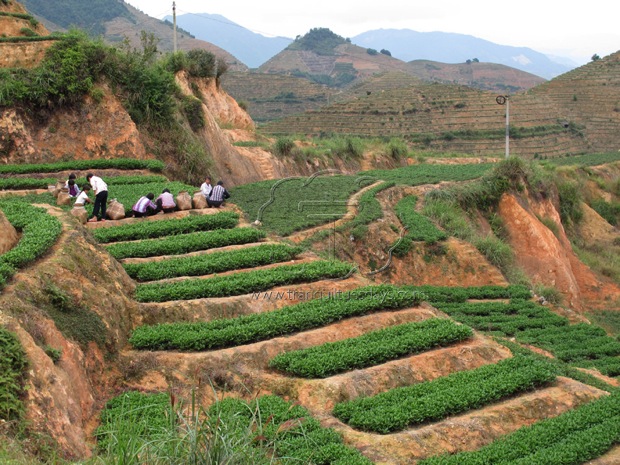 Fig.5 Anxi's red soil oolong tea fields during harvest
The origins of white tea 白茶 are in Fuding, Fujian 福建福鼎 and while you could use the same process and even the same cultivar to produce 'white tea' in other regions in China or other parts of the world, many purists would argue it isn't truly white tea unless it is from Fuding that uses the same 'Big White' (Da Bai 大白) or 'Narcissus (Shuixian 水仙) cultivar and processed in the traditional white tea process. 'Terroir' and what that means for the most distinctive teas is taken so seriously that there are a few teas—pu'er 普洱, longjing 龙井, and dahongpao 大红袍—that have protected identities similar to that of AOC with Champagne or DOC with Parma Ham. Related to this emphasis on terroir, each of the 650 known cultivars in China has been refined over the years to showcase the distinctive attributes of a particular region's teas. For instance, for Yinzhen 银针 (commonly known as Silver Needle White Tea) tea, a tea that is made exclusively from the cultivar Da Baihao known for producing large buds covered in white hairs. After breeding and choosing the appropriate cultivar for a specific region so as to achieve a certain distinctive taste, processing is where the real art of tea production occurs. To create great tea, the producer has to be sensitive to atmospheric conditions, to levels of moisture and humidity, as well as heat levels as well as being aware of how all of these factors will affect the leaves of the plant during any point during the crafting and production process. Some oolong teas, for example, undergo a fourteen-step process that requires constant oversight, while a white tea such as Yinzhen is less labor intensive, although it still demands the involvement of someone who understands exactly when to apply heat to the leaf—at what temperature and for how long—so as to produce an ideally balanced tea. In this well-known image of the Maoist-era Premier Zhou Enlai visiting Longjing tea producers in 1965, the photo not only captures the man hand-firing the tea (a process which breaks down the chemical structure of enzymes to prevent further oxidation and chemical changes in the leaf allowing for the production of a dried green tea leaf) but also the master who controls the fire underneath the wok. Both men are as crucial to the final result. The tradition of specialized processing mastery is a skill that has been handed down over generations of Chinese tea producers, and it remains highly valued. Because of the importance of craftsmanship in tea production, the industry in China remains quite regionalized, with the majority of tea growing and production happening on a small scale. In many other tea-producing countries like India, Kenya and Sri Lanka, the tea industry was created and brought over by the British, who wanted to produce tea as an industrial commodity. Large, industrial-scale and machine-intensive tea manufacturing is more common in those countries. By contrast, tea cultivation and production evolved in a more organic manner in China and the fate of tea industry there has ebbed and flowed along with the commercial and economic conditions and trends throughout modern history. The relationship between Chinese tea production and the British-controlled tea industry of India is a long and complex one. Indeed, according to the United Kingdom Tea Council, the British East India Company placed its first order for 100lbs of China tea in 1664, shortly after the founding of the Qing dynasty. It was shipped from Java (see here). For instance, Indian tea production has a system where all teas are tracked from field to factory to the exporter and then on to the buyer. For teas sold at auction, each lot is tasted and tracked complete with sale price, at least for teas sold at auction. There is a long history of tea cupping and record-keeping that goes back to British rule. Even with some of the larger operations in China they are relatively small compared to the industrial-scale production common in Sri Lanka or Kenya. Those familiar with government policy makers say many technocrats aspire to make China's tea production into a streamlined, more centrally controlled powerhouse similar to that found in other countries. For now, however, the majority of Chinese tea production is regionally disparate, largely uncoordinated, and on a small scale. Even as the economy radically modernizes and industrializes, the majority of tea producers in China remain family-run or village-based operations. Indeed, it is not at all uncommon to see tea grown, hand picked, and hand produced in small-family farms throughout the key tea producing regions. Often tea farmers sell the freshly picked leaves to a local producer who will craft the fresh leaves into a finished product. In other instances families grow, produce, and sell tea on their own. Sometimes families take the finished product to market (as many did in Anxi in October 2011 via motorbike during the peak harvest time), or if they are particularly well known for quality, buyers will go directly to them. In the majority of cases, prized artisan tea is still hand picked and hand-processed. Small electrically powered machines have largely replaced the bamboo devices previously used to produce tea manually. In China and Taiwan a small-scale tea producer will typically own three-to five different small electrically powered machines specific for various steps of tea production that would fit comfortably into a space equivalent to an American [or for that matter Australian--Ed.] family's home garage. In Fujian, I saw the brochure of tea-production-machine manufacturer that showed photos with various traditional bamboo devices needed for each step of Tieguanyin oolong next to photos of the current machine they manufactured to replace each bamboo device. Some producers, however, such as the Bai Mudan white tea producer I work with, continue the tradition of charcoal roasting in the final step in tea processing. Most others now roast the dried tea leaves with electrically powered roasting oven designed for more convenient tea production. Anhui: Taiping Houkui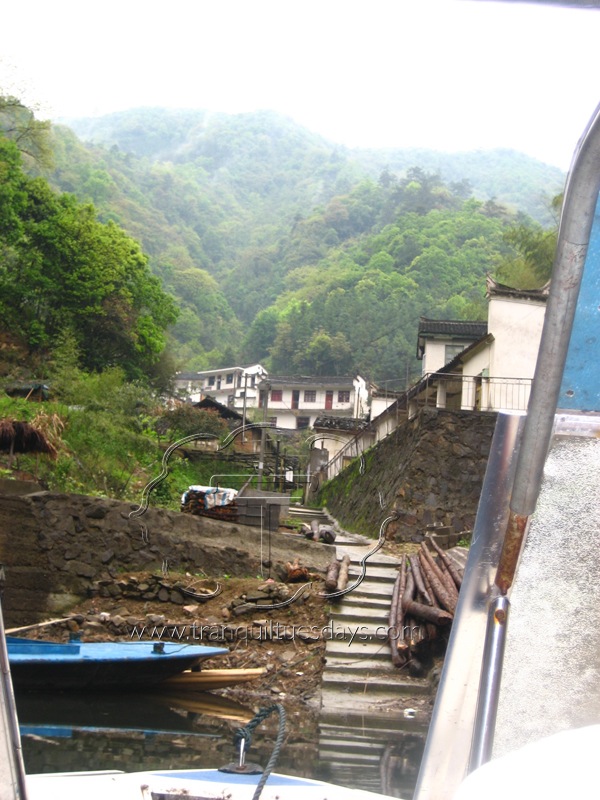 Fig.6 Taiping Houkui, Anhui
In 2010, I went to a Taiping Houkui 太平猴魁 green-tea-producing village in Anhui during the spring harvest. We traversed a lake in a small boat to reach a tiny village of twelve or so homes. Then, to visit the tea gardens, we got back in the boat and traveled to another side of the lake. After disembarking we clambered up dirt roads to get to the gardens, which were approximately 100 mu (some fifty hectares) in size. Although the garden was worked on by the whole village, each family knew exactly where their exact plot started and ended. When we arrived we found the grandfather of the family I was visiting, picking some leaves for himself to drink. After picking, the leaves were taken back to the village where, in one of the homes, a room approximately twenty-five square metres in size had been converted into a tea workshop. There four people worked by hand to produce one of the most extraordinary of teas. 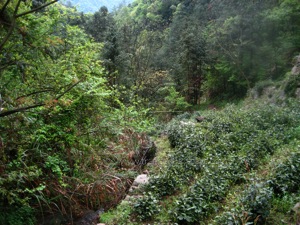
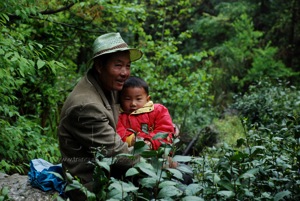 Figs 7&8
Freshly picked leaves lay in a basket withering in the next room. Withering is the first step in all tea production. 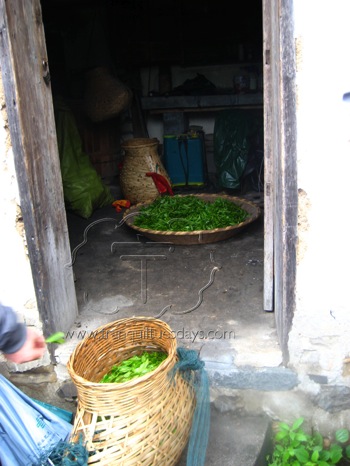 Fig.9 Tea withering in wicker baskets
The next step is a 'firing' which, in many cases, is still done by hand over a hot wok. 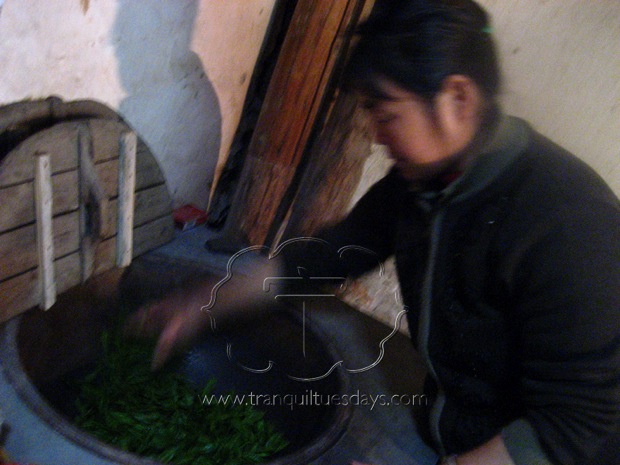 Fig.10 Tea is fired in a wok
In the case of Taiping Houkui, there is an elaborate shaping and rolling process that lends the dried leaves their distinctive shape and which breaks down the cell walls allowing for the release of enzymes. This is what creates the distinctive flavour of the tea. This was done by two women who were sitting at a table hand rolling the leaves. 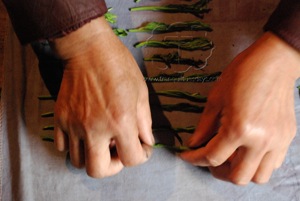
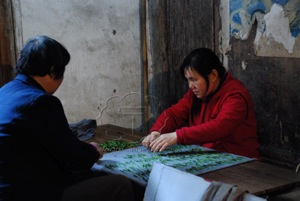 Figs 11&12 Hand-rolling tea
One man presses the leaves on a manual device made out of bamboo with screens. A final baking or firing seals the tea and prevents further oxidation. Controlling and manipulating a tea's oxidation levels is the key for producing the different types of tea: white, green, oolong and black (yellow and pu'er tea are distinguished by a further process of fermenting and aging). 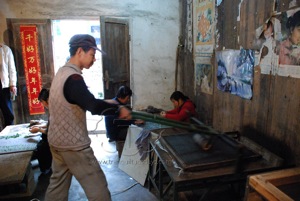
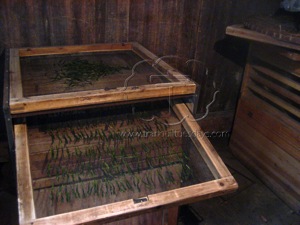 Figs 13&14 Pressing and baking the tea
Since this Taiping Houkui village was only accessible by boat, the family had either to bring their tea to the closest regional tea market, or rely on local itinerant middlemen who collect tea from small-scale producers to take to regional markets. Tea from these markets is often purchased by other middle men who take it to larger regional markets and so on until the tea reaches a commercial outlet that can on-sell the tea to the desired end-consumer, be they in another town, another region, or, sometimes, another country. The export market is supported by a larger scale industry; it is one in which production is more mechanized, and where quantity and shelf-stable taste are valued over artisanal craftsmanship. Morocco is the leading importer of Chinese teas, in particular Gunpowder Green tea, which is used as the base of the national drink, sweetened mint tea. Finding this particular type of green tea in the domestic Chinese tea market is challenging and it is not widely known—for it is a product geared for a specific export market. I have spent time with tea producers who exclaim in wonder that tea would appear to be the only product where the finest examples do not actually leave China—in contrast to electronics and other manufactured goods like clothes where the best examples and highest-quality goods are destined for export market, in stark contrast to the quality of goods aimed at local consumers. Veteran tea traders often emphasize the fact that, despite the growth in international trade as well as experimentation with tea production in new regions around the world, teas grown and produced China remain definitive. This is because they are so distinctive and intertwined unmistakably with provenance. China's tea industry remains a vibrant and thriving space of creativity, energy, and pride in craftsmanship. I would argue that it is unique on the world stage. After having that life-changing sip of Longjing in 2008, I have long wondered why is it that I didn't have a sip of tea that revelatory until I was in China.
|